Tracking animals and humans in the woods is an art form worth mastering for survival needs.
Depending on what you are hunting, you must search from the ground to the tree tops looking for something that has been disturbed or out of place. It will take experience to learn the difference between natural disturbances such as wind or rain and the presence of an animal.
For safer and more productive hunts you must also know your hunting area and check it over on a routine basis. In the aftermath of a crisis, other survivors may enter your hunting area or territory and set up deadly traps or try to steal prey you take from a successful hunt.
Knowing Your Hunting Area
Once you have secured your targeted hunting area, you should make a note of the presence of animals that will be useful for food and other needs.
This survey should include an assessment of typical lairs, ground cover, and anything else that might help you locate prey faster as well as get some ideas about the number of available animals and the long term sustainability of hunting them.
Here are some other things that you should always be aware of in the hunting zone:
- Water usually needs to be clean, running, and not contaminated. Streams, rivers, and ponds are usually a good place to find animal tracks. If you follow these tracks, you will be able to locate well used animal trails and crossings that reveal when animals are most likely to pass through.
- Game animals’ food sources must be plentiful and not contaminated. For example, fields that deer, bear, and turkey graze in must be free of trash, dumped industrial waste, or abandoned rusted out vehicles. Many large and small game animals need a green pasture or meadow surrounded by forest. In woodlands game animals will eat berries, nuts, new leave growth, or feed in small patches of grass.
- Desert terrains tend to be more complicated, but you can still look for natural sand depressions, water holes, rock outcroppings, and tumble weeds for signs of suitable prey. Since prey can usually learn of your presence with ease, it may be very hard to hunt in the desert without using traps or advanced hunting skills based in experience with type of hunting.
- All game animals require cover. For deer, bear, turkeys, and other small game animals a good brush pile, log pile, or a thicket will do. Here all the game animals can relax and rest without being seen. If a predator or a man gets too close these animals can flee out of sight with ease.
Know the Lay of the Land
When approaching a new hunting area, you should always have general idea of the land type. Is this area mountainous, rolling hills, flat, swampy, or desert? Each type of land requires different hunting skills and tracking methods.
- Mountainous areas with very steep changes in altitude, a lot of loose stone covering the ground, and extremely hard ground make it hard to find or follow animal tracks. You will need to rely on leaf disturbances, droppings, gnaw marks, odors, and other signs of animal presence.
- Rolling hills with a combination of forests and meadows are much easier to track with the softer soil and moister content. You should be able to determine the age of track impressions, direction of travel, and the number of animals that made tracks.
- Flat lands have little or no change in altitude. Forests in this area offer some cover for the tracker, but the game animals have a better chance to flee after being spotted. Here they can run full out and even jump great distances to break up their trail. Once you locate a suitable crossing area, it will be best to build a stand, blind, or some other hiding place that will enable you to go unnoticed by your targeted prey.
- Tracking in swamps can be very dangerous and may be impossible. Aside from large amount of water and very little dry land, animal tracks will be few and far between. While you are hunting, you may encounter quicksand, poisonous snakes, and difficulty with navigation.
- Desert terrain may yield tracks, but it may be very hard to determine their age. If you do not pay careful attention to hydration and navigational bearings, you can get lost easily or fooled by mirages. It is also important to note that sand storms can blow up suddenly and bury you, or cause other problems. Since deserts often get very cold at night, you will need to have suitable clothing for extreme cold as well as heat.
Tracking in Your Hunting Area
No matter whether you are hunting for practice, or dealing with a crisis, you should always have a hunting plan. Always try to leave this information with a friend or family member in case you do not return on time. While it may not be possible for this person to organize a search party in a crisis, at least someone will know you are missing.
Mother Nature has many safe guards to protect all animals living there. The first safe guard is silence. When something is wrong or unusual the birds and insects stop singing. This puts all creatures on alert.
At this point the animal’s flight or run instinct kicks in and they leave the area. If you pass this test then quickly and quietly as possible enter the hunting grounds.
If you have hunted this area before then slowly stalk your way to the game trail of choice. Look for disrupted areas including over-turned leaves on the ground or bent and twisted grass blades. When you look closer at the ground, it may be possible to see animal tracks.
For me, forests that have recently had a little rain are easier to track animals in because the damp soil gives a better print and trail. If the dirt is dry it will still leave a print, but not as noticeable. Streams and water holes also make some of the best places to search for game animals.
This is a place where animals will come to you. Areas around clean, potable water will always have plenty of tracks, therefore, even if you arrive at the wrong time of day, simply wait for the animals to show up at their usual time.
Some Notes on Specific Animals
Deer
When they are walking normally through the woods, deer leave a good trail to follow. If they are spooked or otherwise scared they will run, and then leap ten feet or more per bound, which makes it very hard to track them.
Bear
If you are hunting bear or just come across its trail, be very careful, and stay down wind so the bear cannot catch your scent. Unlike other animals, you are far more likely to be the bear’s prey than the other way around. A bear may walk or lumber slowly, but beware of it. Bears may look slow and fat, but can close on you with unbelievable speed.
A human is no match for a bear’s strong paws, which have deadly claws, plus teeth and fangs designed for ripping and tearing. Quite frankly, even if you have a suitable rifle, it is downright foolish and irresponsible to tackle a bear on your own. If you must hunt a bear for food, back away from the track and assemble a party that can take it out safely.
Other animals that can be tracked in the woods are raccoon, opossum, squirrel, rabbit, muskrat, and fox. If you are hungry they all can be eaten. They may taste funny or very gamey, but they will keep you and your family alive. When you take an animal’s life, make a point to use all it has given including the fur and bones.
In conclusion the art of tracking is a must have ability. Without it your chances of your survival in times of post crisis will be from slim to none. Even if you are a world class marksman or archer, without the ability to track your game, you might as well be shooting at paper targets instead of trying to put fresh game on the table.
This article has been written by Fred Tyrell for Survivopedia.




























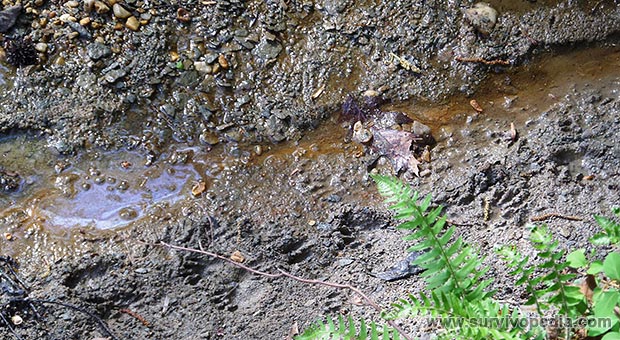
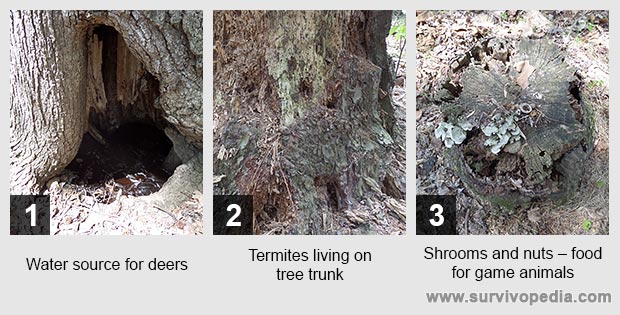
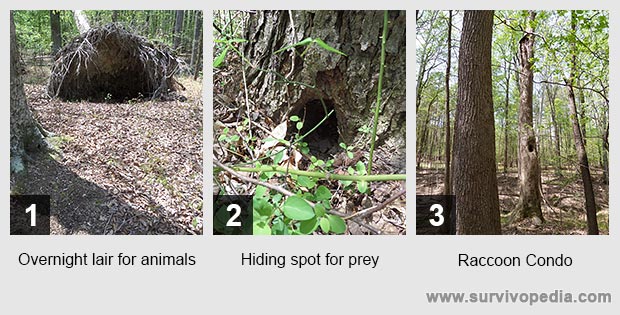

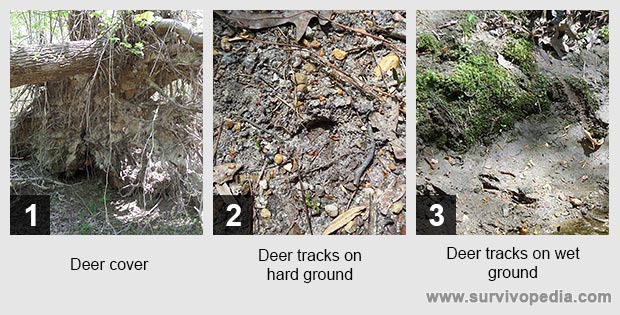


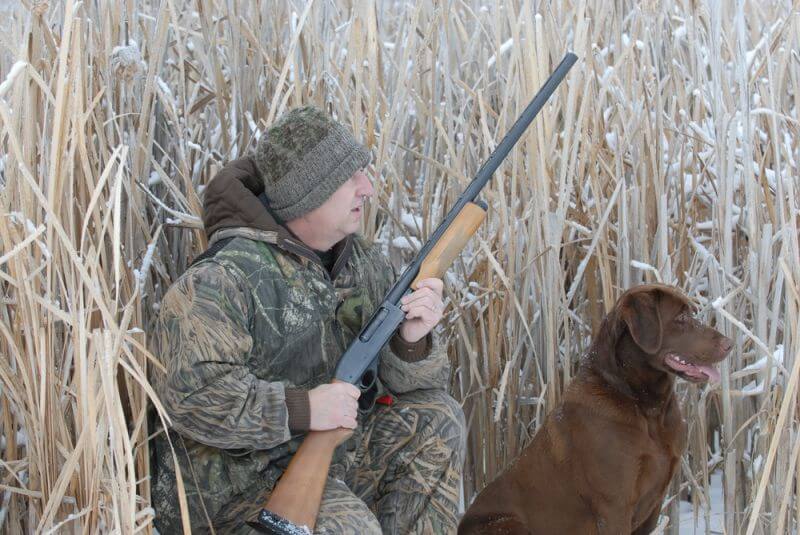
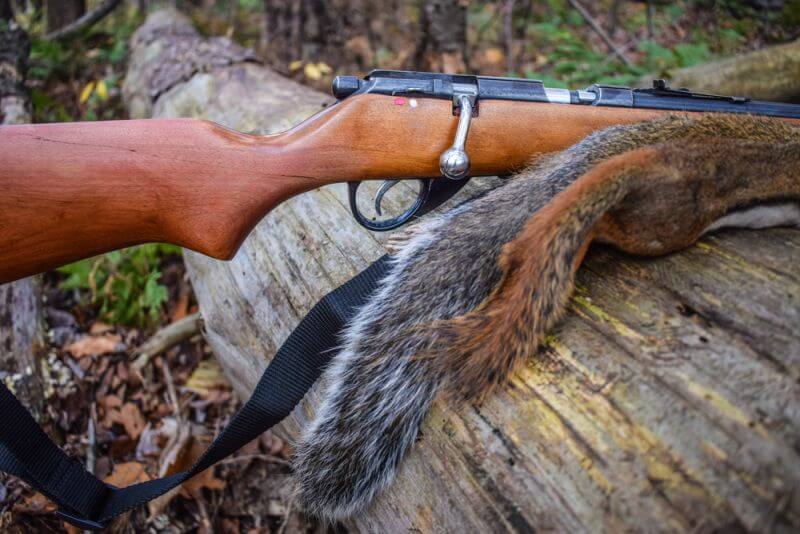
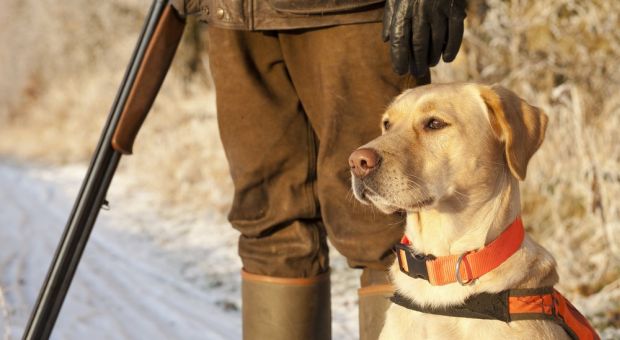







































Tracks are good things, they tell you where an animal has been. If there are enough , they tell you where an animal/animals has been hanging. Single tracks indicate it was jus’ movin’ on through.
Many animals like deer are edge animals. You are more apt to find a deer just inside a tree line than out in the open unless there is abundant food available. Learn to watch for parts of the animal rather than a whole animal. Antlers under some conditions will shine. If deer must cross an opening they will make every attempt to cross in a low spot in a field rather than make themselves more visible. If it’s a hot day in the fall they love the shade (they have their winter coats on), a really cold day watch south facing slopes especially carefully.
Should you locate a heavily used trail or a good scrape line move downwind from it. How far? It depends on whether you are usind a bow, handgun, shotgun, or rifle. You really want to lessen your chances of discovery. Make sure you are not silhoutted and some thing in front of you is great. If you are using a tree stand, if you are right handed place the stand so your left hand is some closer to the trail/scrape line. A tree stand directly facing the trail makes it more difficult to shoot to your right especially with a bow. If you’re left handed it is just the opposite.
If you have wounded something, you may loose its track, mark the last track with bright colored tape around a tree/bush and slowly move in ever increasing circles searching for the next track.
In a survival situation the first hour of the day (about 1/2 hour before sunrise to 1/2 hour after sunrise) and the last hour of the day (abou t1/2 hour before sunset to 1/2 hour after sunset) are the “golden hours”. It is in these two hours you are more likely to take a deer.; because of this you may choose to concentrate your hunting here and use the middle of the day for other chores. Cotton tail rabbits, varying hares, and squirrels follow suite.
A great exception to this golden hour is the time period before a storm or after a big storm.
It might be helpful if you aren’t used to hunting or tracking to download some pictures of animal tracks so you know what you’re looking at. Also get some information about what the animal is like. Is it nocturnal, where does it sleep, what does it eat, those sorts of things. In the top picture there is a human footprint , a smallish bear, a racoon, and a deer. The racoon is going to the right (upstream) and the other three are going to the left. The human track has the least definition but it’s in the water. Even so it likely went by first. Probably the day before. Then the bear went through followed by the deer. The racoon was last because it’s footprint is on top of part of a bear print, it also has the best definition. The prints are really close together so it’s likely they were just coming down to get a drink. None of them were in a hurry, if they were they would be further apart.
I found this article helpful but it does not go into the detail I was looking for.
Thank you very much for sharing it just refreshed my memories about tracking I am going deer hunting in a few weeks I hope I obey by the laws of the land thank you very much